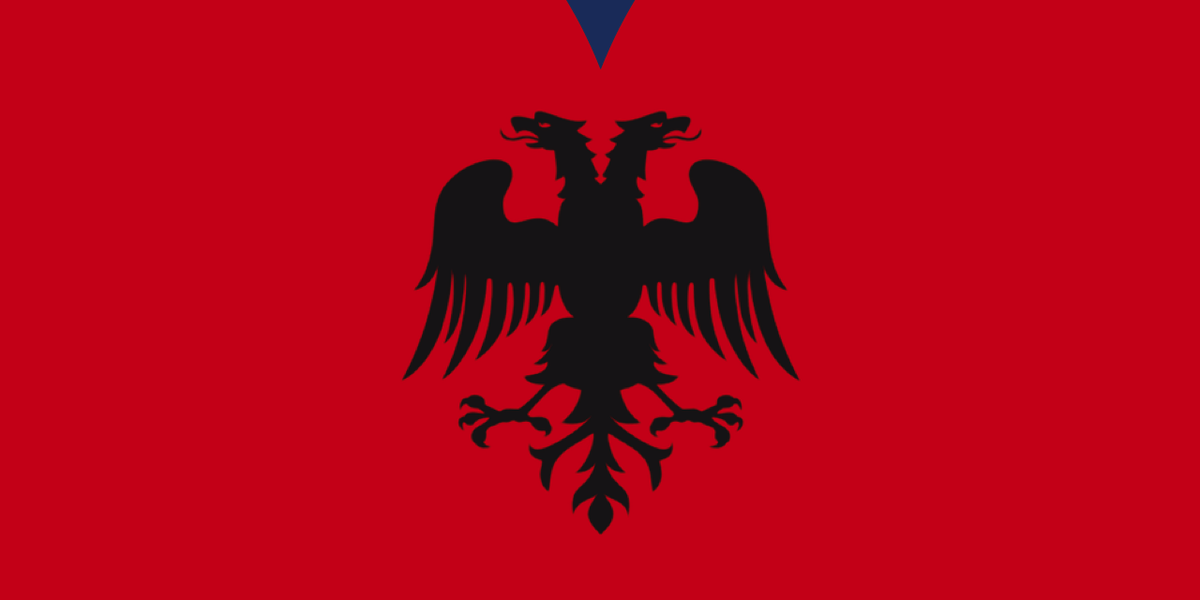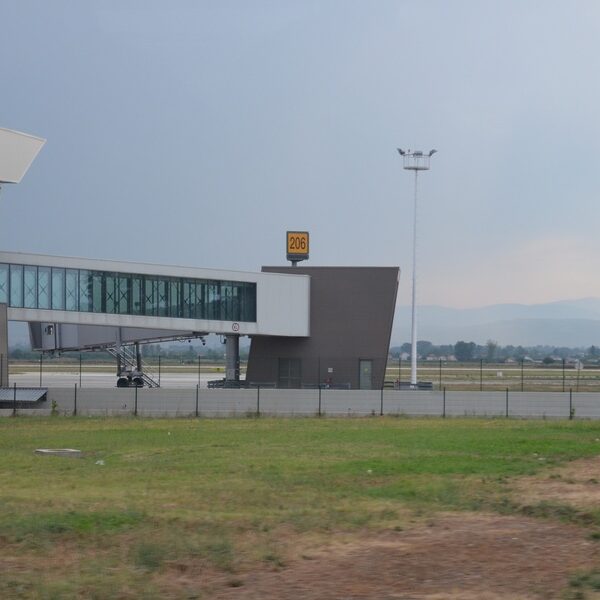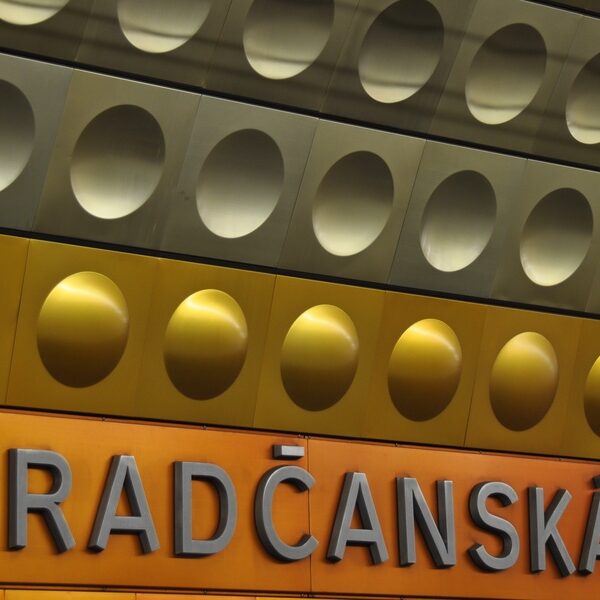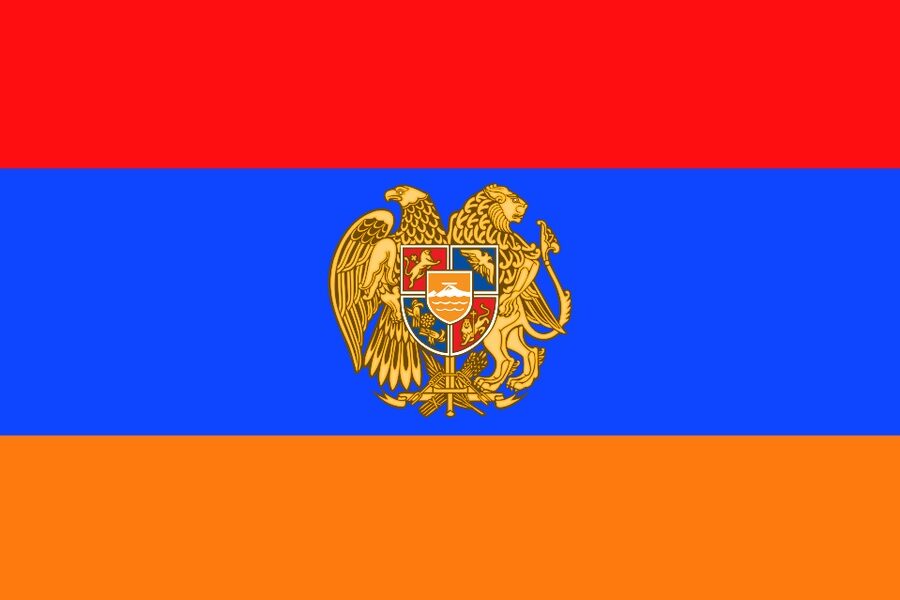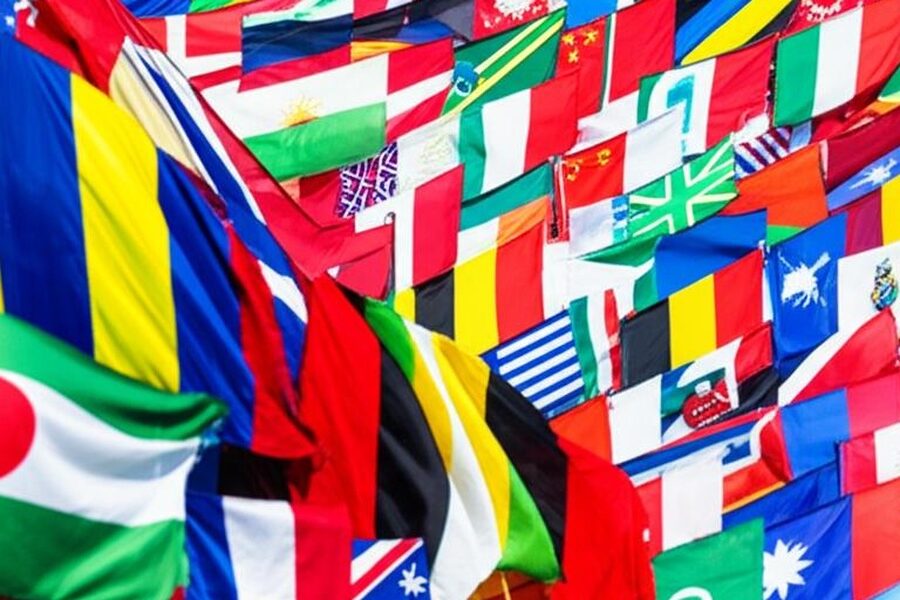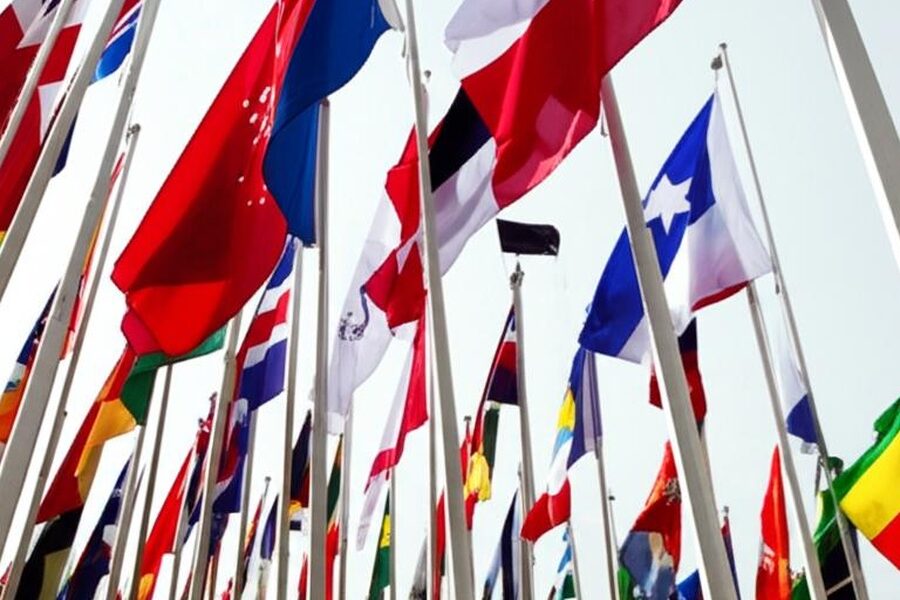Flags often pack history and identity into a simple palette, and the red-and-black pairing is one of the most striking — used to convey everything from revolution and resilience to cultural heritage across different regions. Looking at these flags side by side reveals patterns in symbolism, design choices, and historical moments that shaped them.
There are 31 countries with red and black flags, ranging from Albania to Zimbabwe. For each country, the entries are organized with Flag (emoji),Region & adopted,Meaning so you can compare visual design, date of adoption and symbolism — you’ll find below.
Why do some countries use red and black together on their national flags?
Red commonly represents courage, sacrifice or revolution, while black can signify resilience, the land, or mourning; together they create high contrast that communicates strength and seriousness. The combination appears in contexts from anti-colonial movements to long-standing national emblems, so meaning often depends on each country’s history and the symbols paired with the colors.
How did you decide which countries to include on this list?
The list includes sovereign states whose official national flags prominently feature both red and black (fields or major symbols), based on government sources and vexillology references; it excludes regional or municipal flags and notes the adoption date and commonly accepted symbolism for clarity.
Countries with Red and Black Flags
| Country | Flag (emoji) | Region & adopted | Meaning |
|---|---|---|---|
| Albania | 🇦🇱 | Europe; 1992 | Red: bravery; Black: the double-headed eagle, sovereignty |
| Angola | 🇦🇴 | Africa; 1975 | Red: struggle; Black: the African continent |
| Antigua and Barbuda | 🇦🇬 | Caribbean; 1967 | Black: African heritage; Red: energy and effort |
| Belgium | 🇧🇪 | Europe; 1831 | Black: the shield/sovereignty; Red: courage and strength |
| Germany | 🇩🇪 | Europe; 1949 | Black: resolve; Red: strength and sacrifices |
| Yemen | 🇾🇪 | Asia; 1990 | Red: blood of struggle; Black: dark past/oppression |
| Iraq | 🇮🇶 | Asia; 2008 | Red: courage; Black: oppression overcome |
| Syria | 🇸🇾 | Asia; 1980 | Red: struggle for freedom; Black: oppressive past |
| Egypt | 🇪🇬 | Africa; 1984 | Red: revolution and sacrifice; Black: end of oppression |
| Sudan | 🇸🇩 | Africa; 1970 | Red: struggle and sacrifice; Black: Sudan/the people |
| South Sudan | 🇸🇸 | Africa; 2011 | Black: the people; Red: bloodshed in liberation |
| Mozambique | 🇲🇿 | Africa; 1983 | Red: struggle; Black: the African continent |
| Kenya | 🇰🇪 | Africa; 1963 | Black: the people; Red: blood of the freedom struggle |
| Trinidad and Tobago | 🇹🇹 | Caribbean; 1962 | Red: vitality and warmth; Black: unity and strength |
| Zimbabwe | 🇿🇼 | Africa; 1980 | Black: African heritage; Red: liberation war blood |
| Malawi | 🇲🇼 | Africa; 2012 | Black: the people; Red: blood of struggle |
| Jordan | 🇯🇴 | Asia; 1928 | Black: Abbasid heritage; Red: Hashemite/Arab Revolt |
| United Arab Emirates | 🇦🇪 | Asia; 1971 | Red: unity and sacrifice; Black: strength or oil wealth |
| Kuwait | 🇰🇼 | Asia; 1961 | Red: bravery; Black: defeat of enemies |
| Vanuatu | 🇻🇺 | Oceania; 1980 | Black: the ni‑Vanuatu people; Red: blood and unity |
| Papua New Guinea | 🇵🇬 | Oceania; 1971 | Black: local peoples; Red: traditional color and courage |
| South Africa | 🇿🇦 | Africa; 1994 | Black: black population and unity; Red: sacrifices of struggle |
| Dominica | 🇩🇲 | Caribbean; 1978 | Black: soil and African heritage; Red: social justice/vitality |
| Guinea-Bissau | 🇬🇼 | Africa; 1973 | Red: struggle for independence; Black: African unity (black star) |
| Uganda | 🇺🇬 | Africa; 1962 | Black: the people; Red: African brotherhood and blood |
| Saint Kitts and Nevis | 🇰🇳 | Caribbean; 1983 | Black: African heritage; Red: struggle for freedom |
| Ghana | 🇬🇭 | Africa; 1957 | Red: blood of martyrs; Black star: African emancipation |
| Guyana | 🇬🇾 | South America; 1966 | Red: zeal and dynamism; Black: endurance |
| Libya | 🇱🇾 | Africa; 2011 | Red: blood of martyrs; Black: historical region/struggle |
| São Tomé and Príncipe | 🇸🇹 | Africa; 1975 | Red: struggle; Black: country’s black stars (people) and heritage |
| Timor-Leste | 🇹🇱 | Asia/Oceania; 2002 | Red: struggle for independence; Black: obscured past |
Descriptions
Albania
A bold red field charged with a black double-headed eagle at center. The eagle symbolizes Albania’s identity and independence; red represents bravery and bloodshed in the nation’s history. The stark contrast makes Albania’s flag instantly recognizable.
Angola
Two horizontal halves, red over black, with a yellow emblem of a cogwheel, machete, and star. Red stands for the independence struggle, black for Africa, and the emblem evokes labor, peasantry, and socialism from Angola’s post-independence era.
Antigua and Barbuda
A rising sun over a black triangle, flanked by blue and white bands above red. The black represents the people’s African ancestry, red denotes energy and national effort, while the sun signals a new era and optimism for the nation.
Belgium
A vertical tricolor of black, yellow, and red. The black stripe is nearest the hoist and paired with bright red; colors derive from the historic Duchy of Brabant and symbolize sovereignty, courage, and national pride.
Germany
A horizontal tricolor of black, red, and gold. The black and red bands are historic German colors tied to 19th-century liberal movements; together with gold they represent unity, democratic tradition, and the people’s resolve.
Yemen
A simple red-white-black horizontal tricolor adopted at unification. Red commemorates the sacrifices of those who fought for unity, while black symbolizes the end of a darker era in Yemen’s modern history.
Iraq
A horizontal tricolor of red, white, and black with green script. The red stripe stands for bravery and sacrifice, while black reflects past oppression; the green text underscores Islamic identity and national faith.
Syria
Red-white-black horizontal stripes with two green stars on the white band. The red represents the sacrifices of revolution, black the country’s difficult past, and the stars reference historic Arab unity.
Egypt
A red-white-black horizontal tricolor centered by the gold Eagle of Saladin. Red commemorates revolutionary bloodshed, black marks removal of oppression, and the eagle signifies sovereignty and Arab heritage.
Sudan
A horizontal red-white-black tricolor with a green triangle at the hoist. Black is often tied to Sudan’s identity (“land of the blacks”), while red stands for the nation’s sacrifices and revolutionary history.
South Sudan
Black, red, and green horizontal stripes separated by white fimbriations with a blue triangle and gold star. Black represents the South Sudanese people, red the blood of struggle, and other colors show hope and land.
Mozambique
Horizontal green, black, and yellow bands with white fimbriations and a red triangle bearing a book and rifle. Red honors the fight for independence; black represents Africa, and the emblem highlights education and defense.
Kenya
Three horizontal stripes of black, red (fimbriated white), and green with a Maasai shield and spears at center. Black stands for the Kenyan people, red for the liberation struggle, and the shield emphasizes defense of freedom.
Trinidad and Tobago
A red field charged with a white-edged black diagonal band from the upper hoist to lower fly. The bold diagonal design symbolizes the nation’s energy (red) and resilience or unity (black), with white for sea.
Zimbabwe
Seven horizontal stripes and a white triangle containing the Zimbabwe bird and red star. The black central stripe symbolizes the nation’s people, red denotes the liberation war’s blood, while the bird is a national emblem.
Malawi
A horizontal black-red-green tricolor with a rising red sun on the black stripe. Black stands for the Malawian people, red honors their sacrifices, and the sun represents hope and the dawn of freedom.
Jordan
A horizontal black-white-green tricolor with a red chevron at the hoist containing a white star. Black recalls the Abbasid caliphate, while red honors the Hashemite dynasty and the Arab Revolt leading to Jordan’s foundations.
United Arab Emirates
A vertical red band at the hoist with horizontal green, white, and black bands. Red stands for unity and sacrifice; black commonly symbolizes strength or the nation’s historical oil wealth, reflecting pan-Arab colors.
Kuwait
Horizontal green, white, and red bands with a black trapezoid at the hoist. The black shape historically symbolizes defeat of adversaries, while red and other bands follow pan-Arab symbolism of courage and fertility.
Vanuatu
A horizontal red and green field divided by a black chevron edged in yellow, featuring a boar’s tusk emblem. Black represents indigenous people, red the blood of unity and sacrifice, with other elements for tradition.
Papua New Guinea
A diagonal bicolor of black (hoist) and red (fly) with the Southern Cross in white and a yellow bird-of-paradise. Black and red are traditional Papua New Guinean colors, signifying people, culture, and courage.
South Africa
A unique flag with a green Y-shape dividing bands of black, yellow, red, white, and blue. Black and red both appear prominently, representing people, historical struggle, and the nation’s diverse unity after apartheid.
Dominica
A green field with a cross of three bands (yellow, black, white) and a red disk containing a parrot and stars. Black in the cross denotes the island’s soil and heritage, while red emphasizes social justice and community.
Guinea-Bissau
A vertical red band with a black star and horizontal yellow and green bands. The black star stands for African unity and emancipation, while red honors the country’s fight for independence.
Uganda
Six horizontal black, yellow, and red stripes with a white circle bearing the grey crowned crane. Black represents the people of Uganda, red stands for brotherhood and the blood that ties Africans together, yellow for sunshine.
Saint Kitts and Nevis
A diagonal black band edged with yellow dividing green and red triangles, with two white stars on the black. Black denotes African heritage, red signifies struggle and energy, and the stars represent the islands.
Ghana
A horizontal red, gold, and green tricolor with a central black star. The red stands for the sacrifices made for independence; the black star is a symbol of African freedom and unity promoted by Ghana’s founding leaders.
Guyana
A green field with a red isosceles triangle edged in white and a longer black-edged yellow triangle. The red arrow shape conveys zeal and drive, while black edging signifies endurance and resilience of the people.
Libya
A horizontal red-black-green tricolor with a white crescent and star centered on the black stripe. The black band, once central in pre‑Gaddafi symbolism, and red convey historic regions and the sacrifices of Libya’s people.
São Tomé and Príncipe
Three horizontal green, yellow, and green bands with a red triangle at the hoist and two black stars on the yellow. The red triangle stands for independence struggle, while the black stars symbolize the people and African identity.
Timor-Leste
A red field with black and yellow isosceles triangles and a white star inside the black triangle. Red honors the fight for freedom, and black represents the difficulties and oppression overcome during that history.

